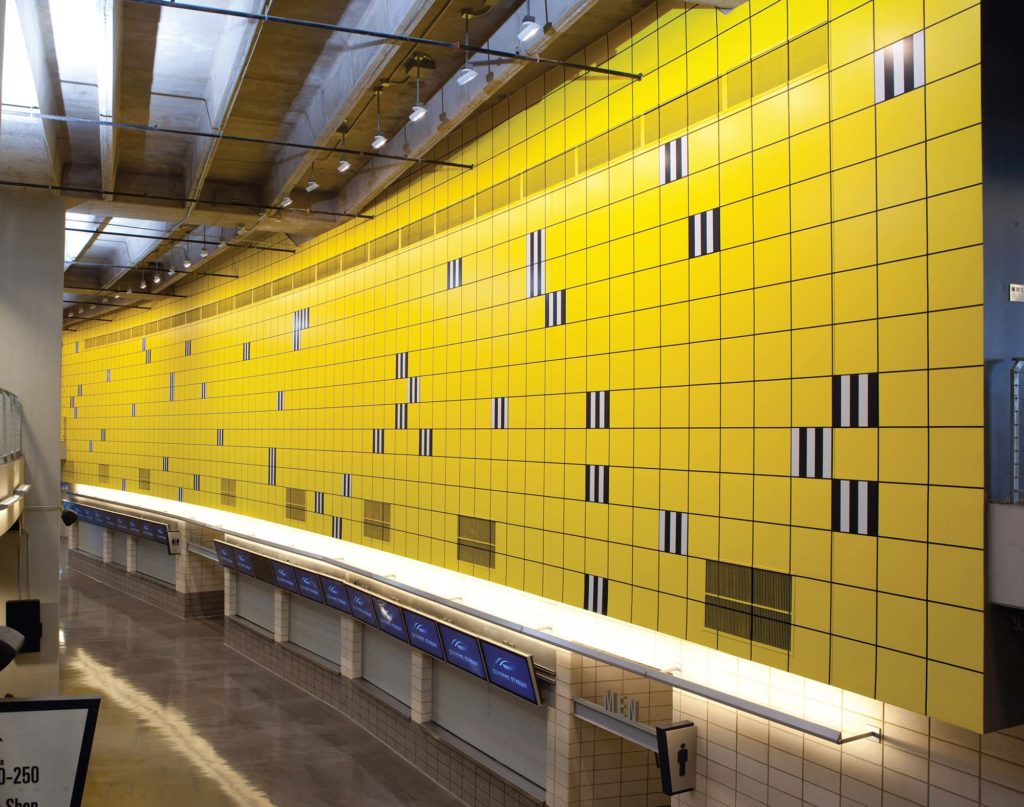
Wall painted yellow with hand-drawn grid and 25 screen-printed aluminum plates
Edition 10 of 15 and 11 of 15
Approximately 21 feet by 118 feet
Daniel Buren’s bright yellow wall painting fits into its surroundings at the same time that it stands out from them. This ambiguity leads many viewers to ask: “Is it art or just part of the building?” And that is exactly what the veteran French artist wants you to ask, both of his signature stripe works and everything that has been made by mankind.
Buren’s point is that it is too limiting to think of art as only a precious object that needs to be sequestered in a museum. In his radically democratic view, art is most compelling when it is unexpected, especially when it interacts with its context and alters our perceptions by getting us to think about the world we inhabit.
Buren began his distinguished career in the early 1960s. At that time, messy, abstract painting had become cliché. Buren’s solution was to use ready-made pieces of striped canvas. In 1965, he selected a standard pattern: solid vertical colored stripes alternating with white stripes of the same width, 8.5 centimeters. In 1967, Buren abandoned canvas and began printing his now trademark stripes on posters, which he affixed to walls, fences, benches, and phone booths all over Paris.
Unexpected Variable Configurations: A Work in Situ (1998) is classic Buren. On an immense expanse of identical yellow squares hang 50 aluminum panels, each printed with a black-and-white or white and- black pattern. The positions of the panels are determined by chance. And like all of Buren’s works, this one invites double takes as viewers see art—and everything around it—with fresh eyes.